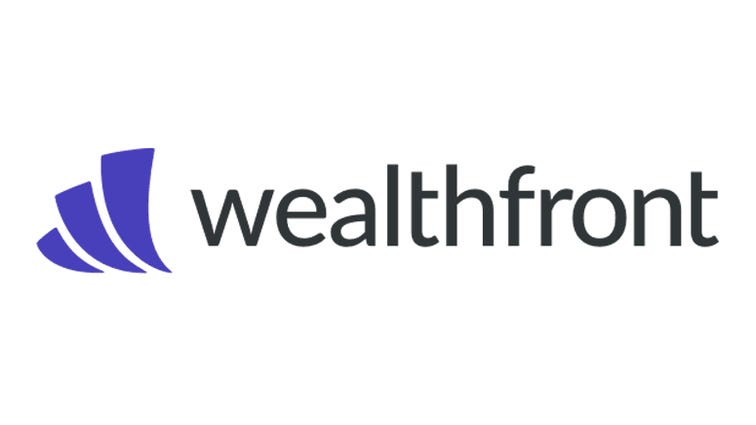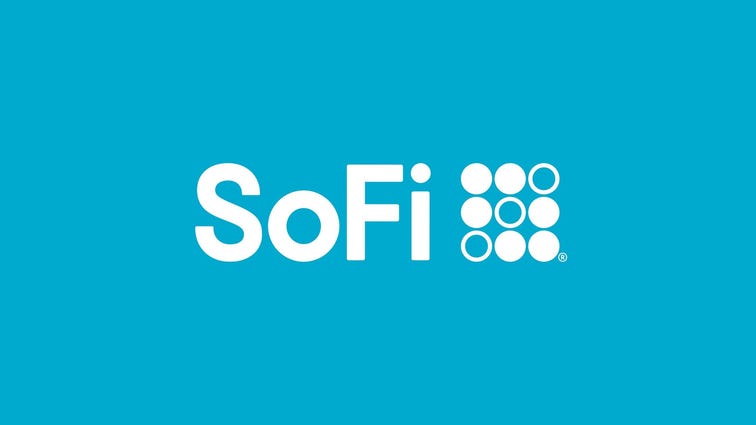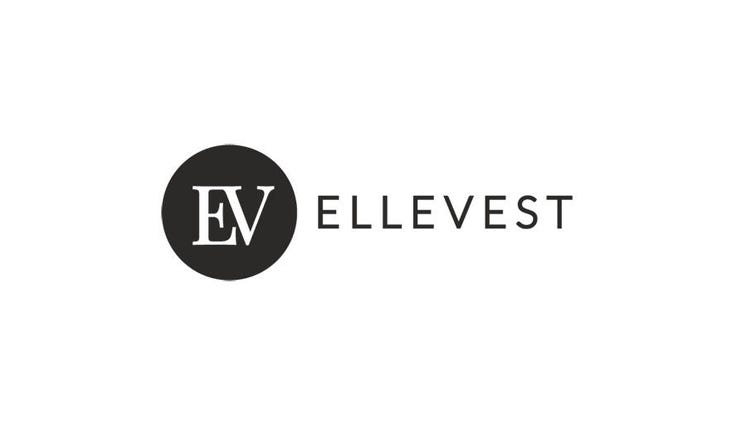In recent years we’ve seen an increase in physical and digital robotic services to help with essential tasks, from robot vacuums to browser extensions. One of the most impressive 21st-century advances has been in artificial intelligence and machine learning, with computers getting smarter every day. And these computers can now help you manage your investments, using your money to make more money without your hands on the wheel.
Much like self-driving Teslas, robo-advisors are online financial investment platforms that create and manage an investment portfolio based on your financial goals and individual needs, just without your 24/7 attention. Much cheaper than a human financial advisor, robo-advisors let you invest and relax.
All you need is a little cash and to answer a few questions about your goals and investment style. It’s like having a financial consultant on call at all times.
Robo-advisors (which include Betterment, Wealthfront and other big names) are ideal options not only for first-time investors, but also for people who don’t have a lot of time for portfolio management or who are turned off by high management or advisory fees that come with a traditional financial adviser. But they aren’t the only options available for planning your investment strategy. If you have a specific robo-advisor in mind, you can use the same criteria we do to see if it meets your expectations.

Read more: How to start investing right now
How we chose the best robo-advisor
To determine the best robo-advisor out there, we reviewed them based on:
- Minimum account opening balances and ongoing balances (if any)
- Number of fees and their costs
- Variety of investment accounts available
- Access to a human investment manager (for financial advice and technical support)
If you’re a hands-on investor, or feel strongly about going to a human financial planner for investment advice, robo-investing probably isn’t for you. Instead, try using a portfolio manager or selecting your portfolio investments yourself. But if you prefer the hands-off approach to a managed portfolio, a robo-advisor might be a great choice.
Many of the robo-advisors below have a lot in common. The best one for you depends on the type of investor you are. Review our picks to choose the right service for your needs.
Read more: What is a robo-advisor? How Wealthfront, Betterment and others manage your money

 \n ","topic":"","ttag":"","variant":"","viewguid":"","event":"listicle|image|1","correlationId":"","_destCat":"https:\/\/www.betterment.com\/","productName":"Best overall","formatType":"IMAGE","location":"LIST","position":1,"sku":"","dwLinkTag":"article-body|listicle|image","selector":"#article-body #listicle-0d45f7eb-2ba6-4959-8f06-c6aa86b891e8 .itemImage"}}” rel=”noopener nofollow” target=”_blank”>
\n ","topic":"","ttag":"","variant":"","viewguid":"","event":"listicle|image|1","correlationId":"","_destCat":"https:\/\/www.betterment.com\/","productName":"Best overall","formatType":"IMAGE","location":"LIST","position":1,"sku":"","dwLinkTag":"article-body|listicle|image","selector":"#article-body #listicle-0d45f7eb-2ba6-4959-8f06-c6aa86b891e8 .itemImage"}}” rel=”noopener nofollow” target=”_blank”>


Betterment
Betterment was one of the first robo-advisors. It’s stood the test of time to become one of the most popular financial planning robo-advisors.
With Betterment, you only pay one fee: 0.25% annually on your balance (or $25 for every $10,000 you have). Betterment also offers a premium tier for just 0.15% more. Enrolling in the 0.4% annual fee tier will give you unlimited access to certified financial planners and advice on all your investments — even those that aren’t with Betterment. And thanks to automatic rebalancing and tax-loss harvesting, you won’t hang on to assets that aren’t working their hardest for you. Tax-loss harvesting is when a security is sold at a loss and a similar one is bought to replace it, offsetting taxable gains and income. Along with that, the $0 minimum balance means you can get started right now.

 \n ","topic":"","ttag":"","variant":"","viewguid":"","event":"listicle|image|2","correlationId":"","_destCat":"https:\/\/wealthfront.4fq8.net\/c\/159047\/173024\/3104?subId1=[subid_value]&u=https:\/\/www.wealthfront.com\/","productName":"Best overall","formatType":"IMAGE","location":"LIST","position":2,"sku":"","dwLinkTag":"article-body|listicle|image","selector":"#article-body #listicle-b2292fe3-059d-4f4d-95b2-bc497b0c77f0 .itemImage"}}” rel=”noopener nofollow” target=”_blank”>
\n ","topic":"","ttag":"","variant":"","viewguid":"","event":"listicle|image|2","correlationId":"","_destCat":"https:\/\/wealthfront.4fq8.net\/c\/159047\/173024\/3104?subId1=[subid_value]&u=https:\/\/www.wealthfront.com\/","productName":"Best overall","formatType":"IMAGE","location":"LIST","position":2,"sku":"","dwLinkTag":"article-body|listicle|image","selector":"#article-body #listicle-b2292fe3-059d-4f4d-95b2-bc497b0c77f0 .itemImage"}}” rel=”noopener nofollow” target=”_blank”>


Wealthfront
Wealthfront is, alongside Betterment, one of the biggest robo-advisors available, but it does have an account minimum of $500, meaning you need at least that much money to open the account. It allows you to check monthly reports on your portfolio and make asset adjustments as necessary, and you can switch to more conservative investments or riskier ones with ease.
Wealthfront shared the best ranking because it offers tax-loss harvesting, taking advantage of changes in the market to reduce your tax bill. The money earned from lower taxes covers Wealthfront’s 0.25% advisory fee for 96% of customers, so it largely costs nothing to use it.
Moreover, Wealthfront offers US direct indexing (formerly known as stock-level tax-loss harvesting) where individual stocks that are losing you money get moved around for more favorable ones. It’s good for stock investors because you get the benefit of minimizing your taxable gains with your higher-risk stock investments. This enhanced feature and others are available if your account is over $100,000. For example, the digital advisor feature Smart Beta (for portfolios $500,000 and up) uses many different risk factors to determine the weight of investments in your portfolio, analyzing value, dividend yield and volatility. But you don’t need to pay a higher annual fee to access them, you just need more money in your investment account.

 \n ","topic":"","ttag":"","variant":"","viewguid":"","event":"listicle|image|3","correlationId":"","_destCat":"https:\/\/www.myfinance.com\/reporting\/redir?redir=https%3A%2F%2Foc.brcclx.com%2Ft%2F%3Flid%3D26680549%26tid%3D%7Bsub_id%7D&utm_campaign=cnet-sofi-autoinvest-link","productName":"Best for beginners","formatType":"IMAGE","location":"LIST","position":3,"sku":"","dwLinkTag":"article-body|listicle|image","selector":"#article-body #listicle-c3114f73-4d34-4c5b-bc98-c1b63e5f2f19 .itemImage"}}” rel=”noopener nofollow” target=”_blank”>
\n ","topic":"","ttag":"","variant":"","viewguid":"","event":"listicle|image|3","correlationId":"","_destCat":"https:\/\/www.myfinance.com\/reporting\/redir?redir=https%3A%2F%2Foc.brcclx.com%2Ft%2F%3Flid%3D26680549%26tid%3D%7Bsub_id%7D&utm_campaign=cnet-sofi-autoinvest-link","productName":"Best for beginners","formatType":"IMAGE","location":"LIST","position":3,"sku":"","dwLinkTag":"article-body|listicle|image","selector":"#article-body #listicle-c3114f73-4d34-4c5b-bc98-c1b63e5f2f19 .itemImage"}}” rel=”noopener nofollow” target=”_blank”>


SoFi
The SoFi robo-advisor is best known for handling loans, but it’s recently gotten into financial investments, as well.
SoFi doesn’t charge any fees for automated investing and you have access to financial experts anytime by email, phone or chat. Like Betterment and Wealthfront, SoFi is a fiduciary, which should mean it won’t sell you unnecessary products or give you financial advice that doesn’t work for you. You can start by investing with as little as $1 right now. With no advisory, administrative or other account fees, your money goes to your investments — not to someone or something managing it. No matter your account portfolio balance, you have free, unlimited access to human financial planners in case you need specific help. (With Betterment, that comes with an extra fee.) These beginner-friendly settings offset the fact that SoFi doesn’t come with all the bells and whistles of other platforms, such as tax-loss harvesting. But SoFi does offer career coaching to all its members at no additional cost, giving you some extra perks for using this platform.
You can also invest in cryptocurrency through SoFi — including bitcoin and ethereum — and when you make your first trade of $10 or more, SoFi will give you $10 in bitcoin. As another fun introductory perk, you can play a “claw game” when you download the SoFi app, giving you the chance to win up to $1,000.

 \n ","topic":"","ttag":"","variant":"","viewguid":"","event":"listicle|image|4","correlationId":"","_destCat":"https:\/\/oc.brcclx.com\/t\/?lid=26672466&cr=27625&last_updated=1593122724?u1=[subid_value]","productName":"Best for goal-based investing","formatType":"IMAGE","location":"LIST","position":4,"sku":"","dwLinkTag":"article-body|listicle|image","selector":"#article-body #listicle-4bb5689d-caf8-428c-92d3-1d4625716a2f .itemImage"}}” rel=”noopener nofollow” target=”_blank”>
\n ","topic":"","ttag":"","variant":"","viewguid":"","event":"listicle|image|4","correlationId":"","_destCat":"https:\/\/oc.brcclx.com\/t\/?lid=26672466&cr=27625&last_updated=1593122724?u1=[subid_value]","productName":"Best for goal-based investing","formatType":"IMAGE","location":"LIST","position":4,"sku":"","dwLinkTag":"article-body|listicle|image","selector":"#article-body #listicle-4bb5689d-caf8-428c-92d3-1d4625716a2f .itemImage"}}” rel=”noopener nofollow” target=”_blank”>


Ellevest
Ellevest was created by women especially for women, although anyone can sign up. Having launched initially with a fee-based model, Ellevest has now shifted to a flat monthly membership fee. For $1 a month, the Essential plan gives you access to investing and banking tools, educational materials and a 20% discount on the company’s coaching service (sessions start at $125). The Plus plan, which costs $5 a month, adds personalized retirement account planning. And the $9-a-month Executive tier accommodates multigoal investing and management of up to six investment accounts.
The Ellevest robo-advisor platform algorithm bases your asset allocation investments on important realities for women, including pay gaps, career breaks and average lifespans, since women historically earn less than men do — and live longer. You have the option to select impact portfolios or companies that match your investment goal. Given that not every investment management company offers sustainable, responsible and impact investing, you could see it as a way for women to invest in women, furthering their economic growth and sustainability.

 \n ","topic":"","ttag":"","variant":"","viewguid":"","event":"listicle|image|5","correlationId":"","_destCat":"https:\/\/www.axos.com\/invest\/managed-portfolios","productName":"Best for added customization","formatType":"IMAGE","location":"LIST","position":5,"sku":"","dwLinkTag":"article-body|listicle|image","selector":"#article-body #listicle-881189dd-8b75-4c00-a997-0e23b365c0fb .itemImage"}}” rel=”noopener nofollow” target=”_blank”>
\n ","topic":"","ttag":"","variant":"","viewguid":"","event":"listicle|image|5","correlationId":"","_destCat":"https:\/\/www.axos.com\/invest\/managed-portfolios","productName":"Best for added customization","formatType":"IMAGE","location":"LIST","position":5,"sku":"","dwLinkTag":"article-body|listicle|image","selector":"#article-body #listicle-881189dd-8b75-4c00-a997-0e23b365c0fb .itemImage"}}” rel=”noopener nofollow” target=”_blank”>


AndSim/iStock /Getty Images Plus/Getty Images
Most robo-advisors don’t let you pick which securities to invest in. That’s because they’ve subscribed to a managed-portfolio-only approach, eschewing self-directed trading entirely. However, Axos Managed Portfolios, owned by Axos Bank, is one of the few robo-advisors on the market with both automated investing and direct trading, allowing you to have a managed portfolio and make your own commission-free trades on the same platform (not to mention also regular banking services). This includes the ability to trade stocks and exchange-traded funds. You open these accounts separately, but everything will be in one place.
And the ability to have both isn’t expensive at Axos: You need $500 to start trading, but the management fee is only 0.24%, cheaper than Betterment and Wealthfront by 0.01%. Accounts that go below the $500 minimum get charged $1 a month. There are two big downsides to Axos, though. First, Axos’s self-directed trading has a slimmer number of securities you can purchase and trade compared to other brokerages. For example, you can’t buy and sell bonds on the platform. Second, Axos’s more powerful investing tools, including real-time market data, are locked behind their premium tier called Axos Elite, which costs $10 a month. It’s a bummer because other brokerage platforms fold in some of these powerful investing tools in their service.

 \n ","topic":"","ttag":"","variant":"","viewguid":"","event":"listicle|image|6","correlationId":"","_destCat":"https:\/\/investor.vanguard.com\/advice\/digital-advisor\/","productName":"Another option to consider","formatType":"IMAGE","location":"LIST","position":6,"sku":"","dwLinkTag":"article-body|listicle|image","selector":"#article-body #listicle-4967bd2b-8c90-4c77-8f7b-f5c0638dae95 .itemImage"}}” rel=”noopener nofollow” target=”_blank”>
\n ","topic":"","ttag":"","variant":"","viewguid":"","event":"listicle|image|6","correlationId":"","_destCat":"https:\/\/investor.vanguard.com\/advice\/digital-advisor\/","productName":"Another option to consider","formatType":"IMAGE","location":"LIST","position":6,"sku":"","dwLinkTag":"article-body|listicle|image","selector":"#article-body #listicle-4967bd2b-8c90-4c77-8f7b-f5c0638dae95 .itemImage"}}” rel=”noopener nofollow” target=”_blank”>


AndSim/ iStock /Getty Images Plus/Getty Images
A truly robotic advisor, Vanguard Digital Advisor is great for those with a completely hands-off approach, since this platform doesn’t give you access to human financial advisors. However, what Vanguard does give you is some of the lowest costs in this space, with an all-in 0.2% advisory fee — and Vanguard’s promise is that you won’t pay more than $2 for every $1,000 in your account. They’ll also waive the fee for 90 days when you sign up. You’ll be in good hands with this long-standing investing giant. Once you sign up, it’ll invest your money in four different Vanguard ETFs, whose low-cost expense ratio (0.5%) is already baked into the 0.2% advisor fee mentioned above, with automatic rebalancing included. However, the major downside to these low costs is that you need at least $3,000 to open an account and there’s no tax-loss harvesting on this platform. Still, it’s a great low-cost platform if you have the capital to begin investing.

 \n ","topic":"","ttag":"","variant":"","viewguid":"","event":"listicle|image|7","correlationId":"","_destCat":"https:\/\/www.acorns.com\/","productName":"Best for micro-investing","formatType":"IMAGE","location":"LIST","position":7,"sku":"","dwLinkTag":"article-body|listicle|image","selector":"#article-body #listicle-69f44f7a-0f46-4920-bbb4-8ad67a94bfbf .itemImage"}}” rel=”noopener nofollow” target=”_blank”>
\n ","topic":"","ttag":"","variant":"","viewguid":"","event":"listicle|image|7","correlationId":"","_destCat":"https:\/\/www.acorns.com\/","productName":"Best for micro-investing","formatType":"IMAGE","location":"LIST","position":7,"sku":"","dwLinkTag":"article-body|listicle|image","selector":"#article-body #listicle-69f44f7a-0f46-4920-bbb4-8ad67a94bfbf .itemImage"}}” rel=”noopener nofollow” target=”_blank”>


Acorns
Acorns is a micro-investment platform. You don’t need a lot to get started or to keep your investments growing.
If all you have is a little spare change, consider Acorns. This automatic investing robo-advisor has no minimum account balance or fees for trading, which some of our picks have. But a basic account is $1 a month and you’ll start investing your leftover money through its automatic Round-Ups program. When you make a purchase on a linked card, your transaction is rounded up to the nearest dollar and your leftover change goes into your Acorns investment account. This automated-investing robo-advisor platform makes investing so hands-off you don’t even need to worry about logging in to make minimum investment contributions to a brokerage account. It’s great if you don’t have a lot of cash to devote to investing right now but still want to get started.
There’s also a $3-a-month personal account that’s many accounts in one, including investing, retirement, checking and a physical debit card. The $5-a-month family plan gives you investment accounts for kids plus investing, retirement and checking accounts.
What is a robo-advisor?
A robo-advisor is an automated financial advisor and investment platform. The system uses a software algorithm to build and manage your portfolio so you don’t have to.
How does robo-investing work?
When you sign up with any robo-investing platform, you’ll answer a few questions about the type of investor you are and your financial plan. You’ll likely have to consider factors including your risk tolerance, expense ratio, minimum investment and when you plan to cash out your investments — each factor should influence which investment option the robo-advisor will choose. This provides the robo-investing platform with the information it needs to build the ideal investment portfolio for you, which will continue to evolve as the markets and your investment options, financial plan, risk tolerance and overall finances change.
It will also help the robo-advisor make sure you have a diversified portfolio best set up to achieve your financial goals, such as earning enough money to add to your retirement account or paying off student loans. Interactive robo-advisors can also help you make sense of your investment options and better understand concepts like socially responsible investing. These are available on multiple platforms now, including two of the biggest names in this space: Betterment and Wealthfront.
How much does a robo-advisor cost?
Fees vary depending on platform, but typically you’re looking at fees around 0.2 to 0.25% of your balance annually. Some platforms don’t charge fees based on your balance and instead charge monthly subscription fees. Ellevest takes this approach, with its basic plan costing just $1 a month.
A robo-advisor is a great way to get into investing without much money or time. If you know investing is important but don’t want to put in a lot of work (or cash), a robo-advisor might work for you.
More personal finance advice
The editorial content on this page is based solely on objective, independent assessments by our writers and is not influenced by advertising or partnerships. It has not been provided or commissioned by any third party. However, we may receive compensation when you click on links to products or services offered by our partners.


